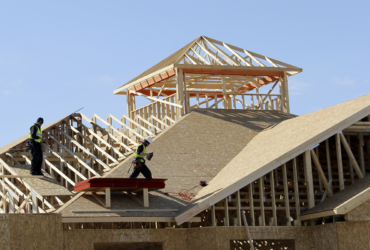At the start of the summer, Federal Reserve Chairman, Jerome Powell, addressed the overheated housing market by saying in a press conference “I would say if you’re a homebuyer, or a young person looking to buy a home, you need a bit of a reset.” At the time, no one really knew what Powell meant by “reset.” However, just three months later we seem to have a better idea.
At last Wednesday’s presser, Chairman Powell addressed the housing reset comment and the affordability problem for housing. “What we need in the longer term is supply and demand to be better aligned… so people can afford houses again. We need to go through a correction to get back to that place.” The problem for the Fed is this is much easier said than done.
Brief History. In the lead-up to the 2008 crash, many homeowners had mortgage rates that were adjustable and, thanks to changing market conditions, were going to adjust to higher levels that would push the servicing cost of the loans to a much higher level. If you combine that with very little money down and falling home prices you get homeowners with little incentive to service those loans. This flooded the market with inventory as underwater investors tried to sell which pushed prices down further and the cycle continued until you get a crash.
The Problem in 2022. The overwhelming majority of homeowners today not only have a record level of equity they also have fixed-rate mortgages. Many of these homeowners refinanced when rates hit historical lows during the pandemic that we are unlikely ever to see again. This makes the current problem the exact opposite of what we saw in 2008. In ’08 everyone wanted to sell, in 2022 everybody wants to rent.
Instead of Selling People Will Rent. In 2008, homes were rising faster than rents. This was the conclusion of Robert Schiller’s paper in 2007. Rents did not support the elevated value of homes. However, in 2022, rents have caught and probably surpassed home values. Why would you even consider selling if you are a homeowner looking to move with a 2.5% mortgage? The Wall Street Journal reported this week that “Home sellers across the U.S., discouraged by the slowing housing market and able to capitalize on the soaring home-rental market, are increasingly opting to hold on to their houses and lease them out instead.”
No Demand No Inventory. Powell made it very clear that he wants supply and demand to regain their balance. Inventory has been at historic lows despite building returning to levels not seen since the 1970s. Powell and the Fed are trying to rectify this problem by lowering demand. Unfortunately, this is not fixing the problem because as demand for homes drops would-be sellers are choosing to rent versus sell for the reasons mentioned above. Rising rates are also discouraging builders because they know demand is depressed so they have less incentive to build which in turn is decreasing supply.
Labor Market Pain. Our economy runs on credit if borrowing costs reach a level that businesses/consumers are no longer comfortable with economic activity will drop off. As consumption falls off businesses will need to find a way to cut costs which usually means layoffs. As people lose jobs they will naturally have to change their living situation. Two people currently living alone may have to team up to afford rent. Children might move in with their parents or vice versa. This eases the demand for rentals which should decrease rents. As rents fall, servicing the loans for those landlords can get tricky which could encourage them to sell thereby increasing the supply of housing.
Nightmare Scenario. This is obviously a nightmare scenario. Nobody wants to see good hardworking Americans lose their job but at the same time, I do not see a way around it. Powell is known for telegraphing his moves to the market and he did just that last Wednesday at the press conference. “We’re never going to say there are too many people working.” But inflation needs to come down. “I wish there was a painless way to do that. There isn’t.” Powell also noted, “The chances of a soft landing are likely to diminish if policy needs to be more restrictive or for longer.” Powell is all but telling us that we need to force people to sell their homes with incredibly low-interest rates to provide much-needed supply. Under normal market conditions, it makes no sense which is why Powell needs below market conditions. The only way to increase the housing supply is to increase the total demand for housing. We need fewer buyers and renters. This can only be accomplished by forcing Americans into cohabitation environments that only a loosening labor market can provide. It is a horrible solution but it appears to be the only one available to central bankers.






Got a Questions?
Find us on Socials or Contact us and we’ll get back to you as soon as possible.